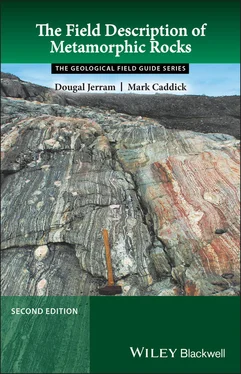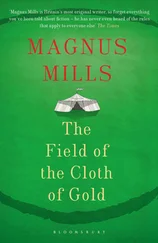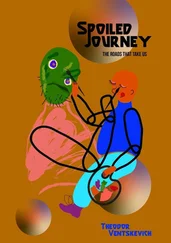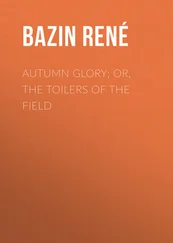Dougal Jerram - The Field Description of Metamorphic Rocks
Здесь есть возможность читать онлайн «Dougal Jerram - The Field Description of Metamorphic Rocks» — ознакомительный отрывок электронной книги совершенно бесплатно, а после прочтения отрывка купить полную версию. В некоторых случаях можно слушать аудио, скачать через торрент в формате fb2 и присутствует краткое содержание. Жанр: unrecognised, на английском языке. Описание произведения, (предисловие) а так же отзывы посетителей доступны на портале библиотеки ЛибКат.
- Название:The Field Description of Metamorphic Rocks
- Автор:
- Жанр:
- Год:неизвестен
- ISBN:нет данных
- Рейтинг книги:4 / 5. Голосов: 1
-
Избранное:Добавить в избранное
- Отзывы:
-
Ваша оценка:
- 80
- 1
- 2
- 3
- 4
- 5
The Field Description of Metamorphic Rocks: краткое содержание, описание и аннотация
Предлагаем к чтению аннотацию, описание, краткое содержание или предисловие (зависит от того, что написал сам автор книги «The Field Description of Metamorphic Rocks»). Если вы не нашли необходимую информацию о книге — напишите в комментариях, мы постараемся отыскать её.
The Field Description of Metamorphic Rocks — читать онлайн ознакомительный отрывок
Ниже представлен текст книги, разбитый по страницам. Система сохранения места последней прочитанной страницы, позволяет с удобством читать онлайн бесплатно книгу «The Field Description of Metamorphic Rocks», без необходимости каждый раз заново искать на чём Вы остановились. Поставьте закладку, и сможете в любой момент перейти на страницу, на которой закончили чтение.
Интервал:
Закладка:

Figure 1.4 Examples of classic (Barrovian) regional metamorphic rocks
(slate photo Jim Talbot, phillite, schist, and gneiss photos Dougal Jerram, migmatite photo Mark Caddick).
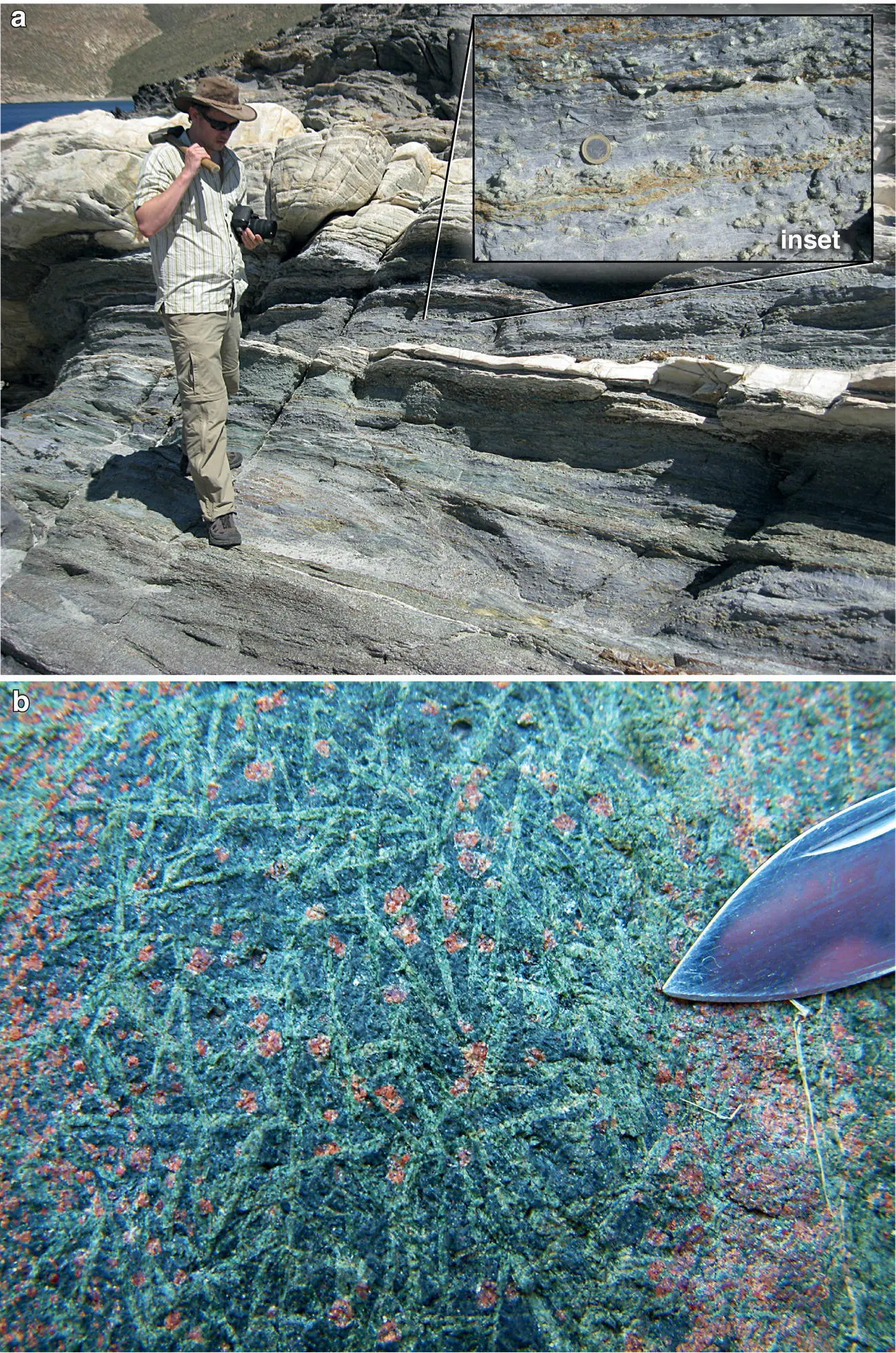
Figure 1.5 (a) Blueschist facies, Syros, Greece (Mark Caddick for scale) with inset figure highlighting lawsonite porphyroblasts, (b) Eclogite facies, Alps
(photo a Mark Caddick, photo b Hans Jørgen).
The regionally metamorphosed rocks are often also characterised by having many structures associated with deformation. The rocks are put under pressure from all sides, but often this pressure is not the same from all sides. This leads to asymmetry in the pressure distribution and the alignment of new metamorphic minerals, rotation of existing and newly growing ones, and faulting and folding of the rocks during their metamorphism. These textures will be touched on in detail in Chapters 4and 5, but banding, cleavage, folding, and dislocation structures are commonplace in regional metamorphic areas (e.g. Figure 1.6).
1.3.3 Contact metamorphic rocks
Igneous rocks can be emplaced into the crust at exceedingly high temperatures. Granites will crystallise at around 700+ °C, and basic rocks such as gabbro may intrude around 1200 °C, establishing a marked temperature gradient between the molten rocks and the host into which they intrude (commonly termed the ‘country rocks’). Along the contact zones between the igneous bodies and their host rock, metamorphic reactions are commonly driven by heat from the cooling magma. This leads to a group of rocks called the contact metamorphic rocks. The contact or ‘baked’ zone around the igneous body can contain a variety of different metamorphic grades that are typically only seen over a relatively short distance as the effects of the hot igneous body diminish rapidly with distance from the magma. This zone of contact metamorphism is called the ‘aureole’ and is typically meters to tens of meters in thickness. Pressure tends to have little effect in contact metamorphism, as it is the act of emplacing the hot igneous body and not a change in burial that makes the metamorphic aureole. Fluid flow during the metamorphism can substantially modify the wall rock composition, a process called metasomatism that is described more in Section 1.3.4, and can increase the footprint of the metamorphic effects by carrying heat further from the magmatic source (a process known as advection).
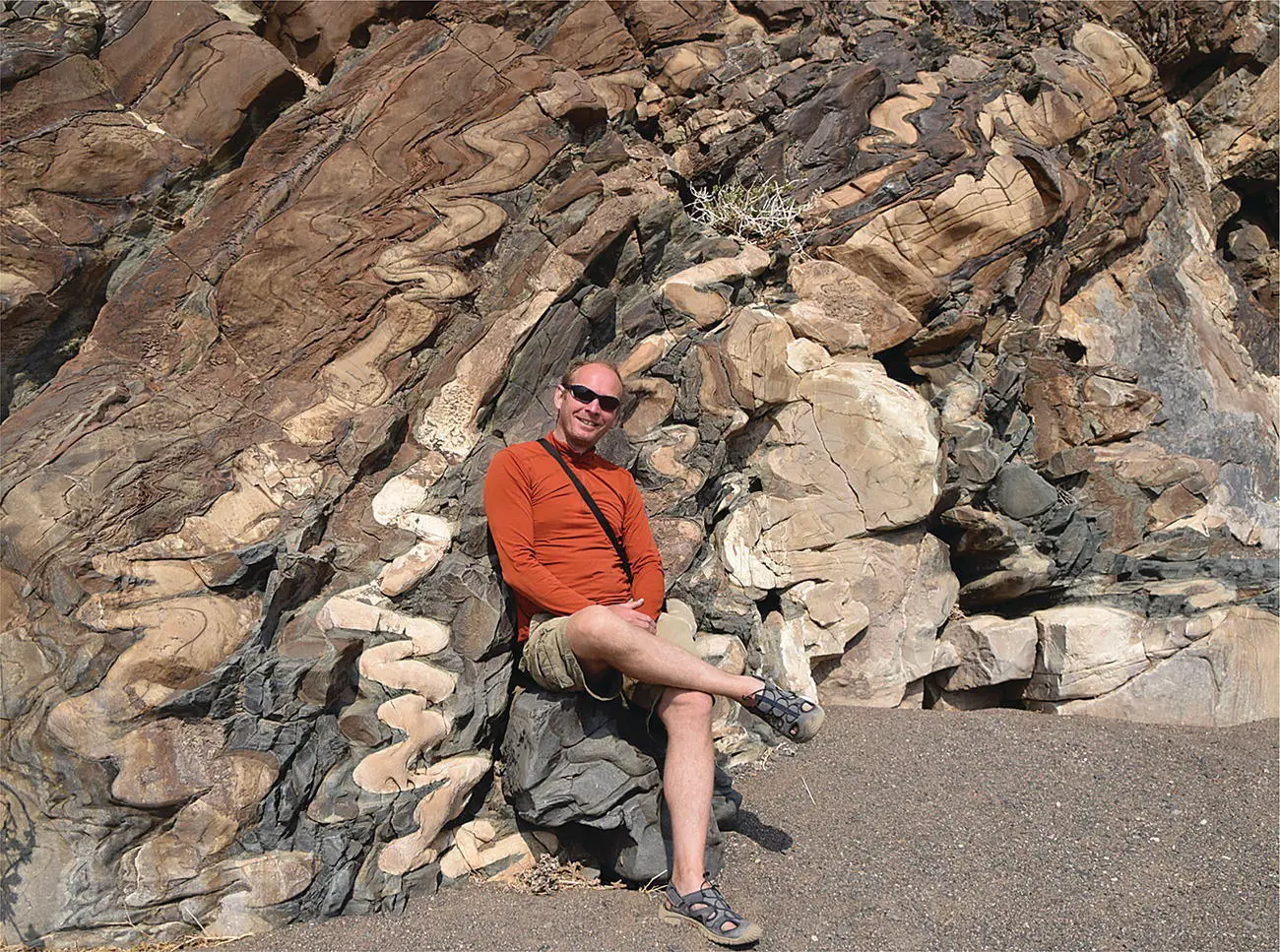
Figure 1.6 Highly folded metamorphic carbonate turbidites, Namibia
(photo Dougal Jerram).
As with regional metamorphic rocks, different assemblages of minerals occur depending on the grade (mainly defined by the amount of heat) that the country rock reached, and depending on the type of country rock. With silliciclastic sediments like sandstones and shales the sequence may consist of chlorite, andalusite, and corderite hornfels, with silimanite and K‐feldspar at very high temperature, and garnet if the crust was at sufficient depth during intrusion (e.g. a contact metamorphic overprint in a regional metamorphic setting). In limestone host rocks, marble is commonly formed, with tremolite, diopside, wollastonite, and forsterite as common minerals if the original carbonate was ‘impure’ (e.g. contained some Si). A schematic contact aureole with some examples is given in Figure 1.7(further detail can be found in Chapter 6).
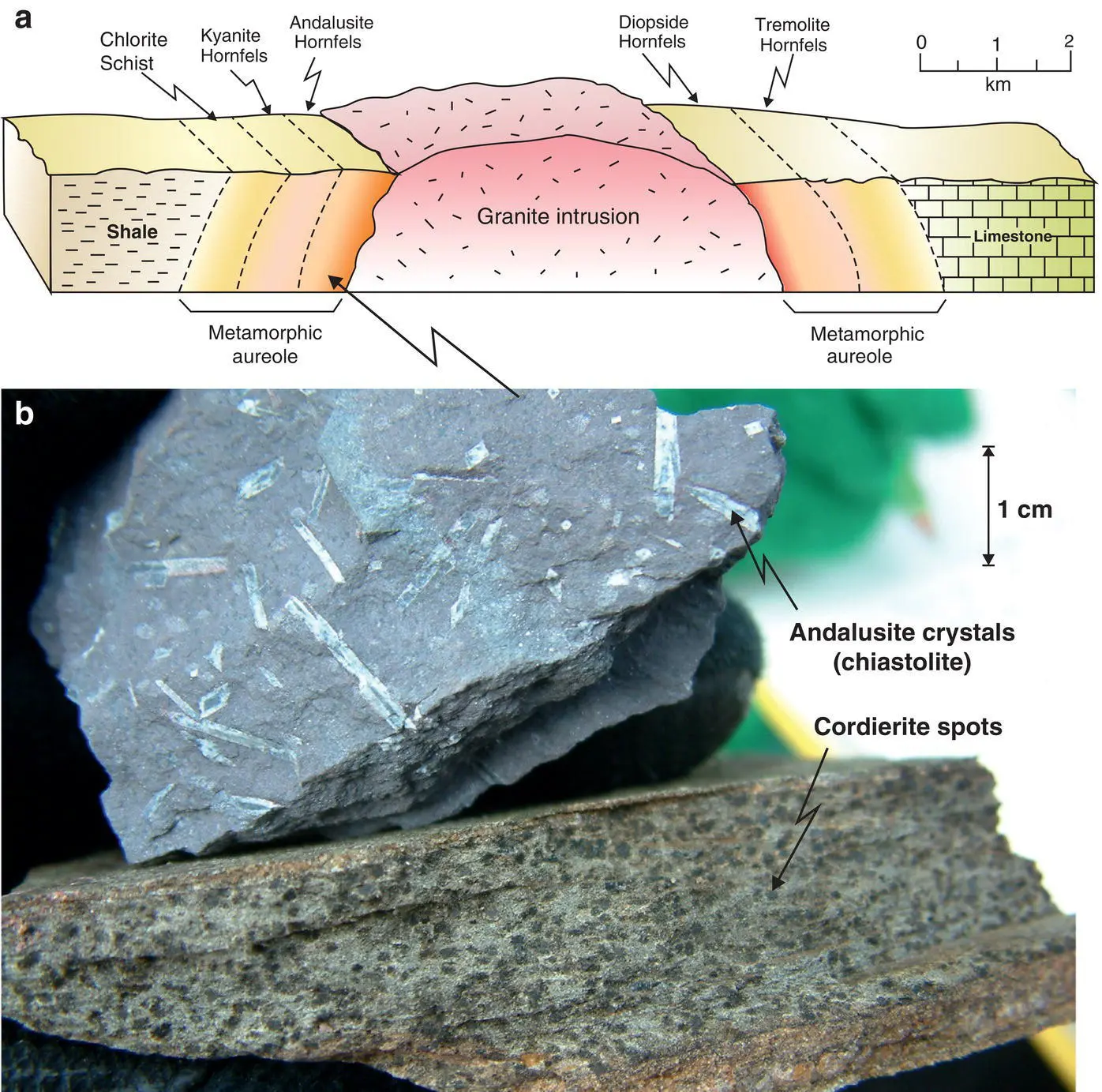
Figure 1.7 Contact metamorphism. (a) schematic of contacts around a granite body. (b) Examples of Andalusite (chiastolite form with graphite intergrowths) and cordierite hornfels from the Lake District, UK
(photo Dougal Jerram).
A major difference between contact metamorphic rocks and the regional metamorphism discussed here is that contact metamorphism is generally quite static, with far less deformation during mineral growth. This means that the newly formed minerals are not typically as strongly aligned as they are in regional metamorphism, and an irregular orientation of fine grained minerals is typical of a ‘hornfels’, a classically diagnostic rock of relatively high temperatures of contact metamorphism.
1.3.4 Hydrothermal metamorphic rocks
The third major set of metamorphic rocks are formed through hydrothermal circulation of fluids. In hydrothermal alteration/metamorphism, the host rocks can be involved in wholesale chemical changes upon interaction with chemically reactive fluids. There exist large parts of the Earth's oceanic crust and upper mantle that are almost entirely made of hydrothermally metamorphosed rocks, formed as oceanic rocks interacts with large hydrothermal cells that circulate seawater and initiate mineral reaction. Depending on the temperature of the crust during this circulation and on the availability of water, the result can vary from almost pristine basalt with a little carbonate veining, through to highly ‘serpentinised’ rocks in which primary olivine in a mantle rock is thoroughly replaced by serpentine group minerals (see Figure 1.8).
The metamorphic rocks exhibit considerable chemical changes that are often termed ‘metasomatic’, with the loss of calcium and silica, and the relative gain of magnesium and sodium. In modern settings the occurrence of ‘black smokers’ and ‘white smokers’ on the sea floor are direct evidence of the hydrothermal cells in action. In the rock record, examples of obducted oceanic crust in the form of ophiolites display this hydrothermal metamorphism and they can also be associated with rich economic metal sulphide mineralisation.
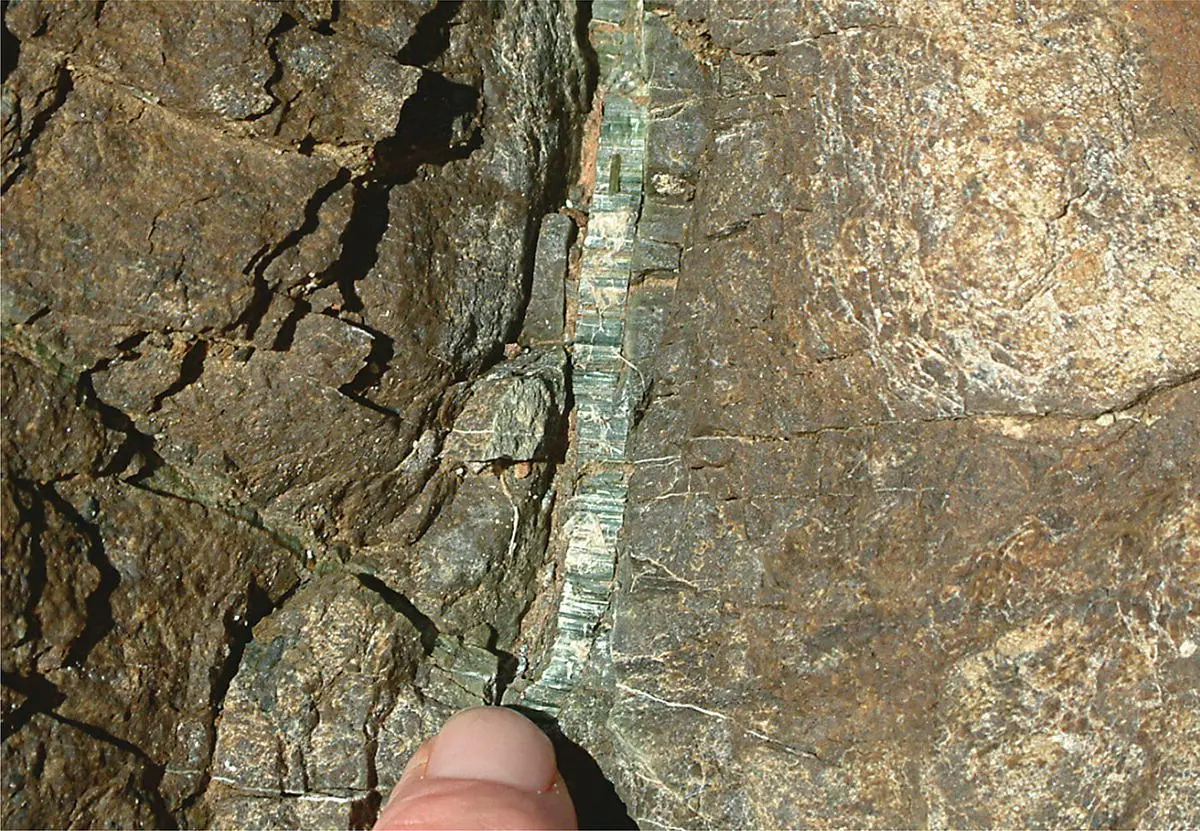
Figure 1.8 Serpentinised ocean crust from the Troodos Ophiolite, Cyprus. A fibrous serpentine vein is visible in the centre of the photo
(photo Dougal Jerram).
1.4 Summary
As we have introduced, a number of key settings exist that lead to the wide variety of metamorphic rocks and metamorphic associations that we find in the field (summarised in Figure 1.9; see also Figure 1.1). This field descriptions book is organised and laid out such that it introduces metamorphic rocks in terms of how they may be recorded in the field, making comments about sample collection and how work might be followed up in the lab and through additional studies (e.g. under the microscope). It is important to understand the various classification schemes and the different grades of metamorphism that can affect the rocks, but it is also equally important to be aware of the many difficulties often faced in identifying metamorphic rock textures and assemblages. Chapters 2and 3provide advice and information on some of the key field skills and metamorphic outcrop description ( Chapter 2), as well the main classification criteria ( Chapter 3). Chapters 4and 5focus in more detail at key structures in metamorphic rocks such as cleavage, shistosity, and isolated bodies such as boudains, augen, and sheared entities. Chapter 6looks at contacts with igneous rocks, veins, and reaction zones. Chapter 7looks at the structural control of faults and fault zones in metamorphic rocks and shear zones including shear sense indicators. In Chapter 8, there are key tables and details for reference by way of a summary, as well as some advice for those who are undertaking a more detailed mapping dissertation or project.
Читать дальшеИнтервал:
Закладка:
Похожие книги на «The Field Description of Metamorphic Rocks»
Представляем Вашему вниманию похожие книги на «The Field Description of Metamorphic Rocks» списком для выбора. Мы отобрали схожую по названию и смыслу литературу в надежде предоставить читателям больше вариантов отыскать новые, интересные, ещё непрочитанные произведения.
Обсуждение, отзывы о книге «The Field Description of Metamorphic Rocks» и просто собственные мнения читателей. Оставьте ваши комментарии, напишите, что Вы думаете о произведении, его смысле или главных героях. Укажите что конкретно понравилось, а что нет, и почему Вы так считаете.
